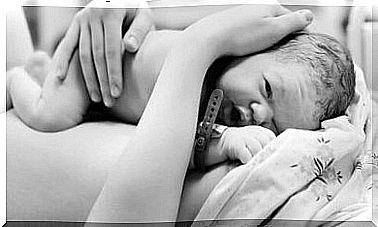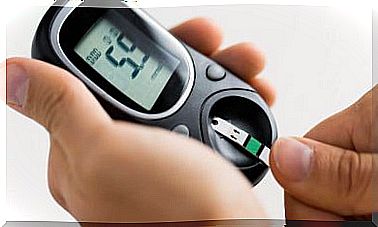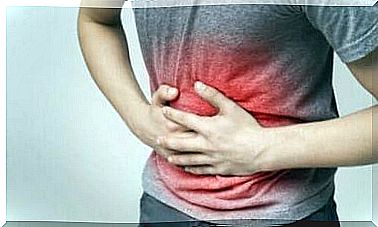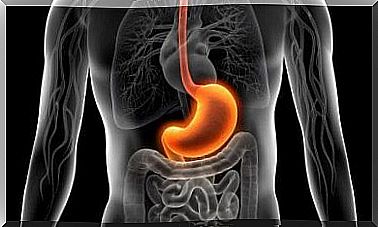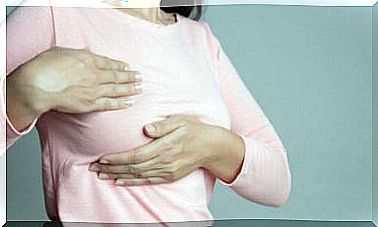Peptic Ulcer: 10 Symptoms That Help To Recognize It
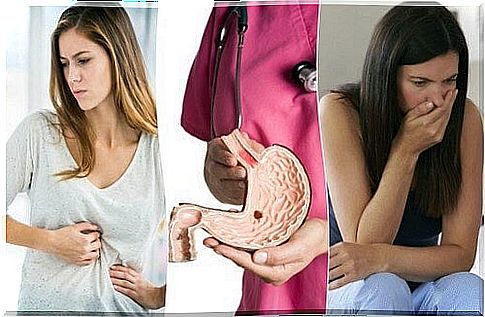
A peptic ulcer is a lesion of the gastric mucosa. It is a wound caused by an excessive production of gastric juices.
Among the causes of peptic ulcer we find Helicobacter pylori infection, a bacterium that grows in the stomach under certain conditions. It can also be the result of over-consumption of medicines or certain digestive disorders.
Alcoholic beverages, irritating foods, and smoking are not a direct cause, but consuming them regularly can worsen symptoms and increase the risk of complications.
Although symptoms are not always intense, it is important to receive timely diagnosis and treatment to avoid serious complications. So let’s see how a peptic ulcer manifests itself.
10 Symptoms That Help Recognize Peptic Ulcer
1. Bloating in the stomach
Stomach bloating is related to several reasons, however it is certainly to be taken into consideration as an initial symptom of peptic ulcer.
The peptic ulcer manifests itself with abdominal swelling, almost always accompanied by heaviness or malaise.
The swelling is linked to an inflammatory reaction, which can be considered a mechanism to fight the aggressions of acids.
2. Burning and abdominal pain
An uncomfortable burning sensation in the stomach could indicate the presence of an ulcer. This symptom, which can also be interpreted as pain, is the result of the lesion of the gastric mucosa.
The burning can be felt in the sternum and navel. At other times, depending on the location of the ulcer, it can be located on the sides of the body.
Usually the symptom worsens with the consumption of spicy or too hot foods.
3. Lack of appetite

Many patients with peptic ulcer suffer from loss of appetite as a result of the symptoms that occur after meals.
The fear of burning and inflammation after eating is usually reason enough to reduce the amount of food ingested.
Loss of appetite ends up being an additional problem, since it can cause nutritional deficiencies.
4. Nausea and vomiting
As with other digestive disorders, ulcers can be accompanied by nausea and vomiting.
Excessive production of gastric juices irritates the gastric mucosa ; therefore, a defense mechanism is triggered which is perceived as a sense of nausea and vomiting.
In some cases, the lesion becomes worse and produces vomiting when it comes into contact with certain foods.
5. Indigestion

A wrong combination of foods or dishes that are too large can cause indigestion even for a healthy stomach. In the event of an ulcer, however, the problem becomes recurrent.
Sores in the gastric mucosa cause irritation and pain upon contact with acidic or hard-to-digest foods. It is possible to feel malaise, bloating and other typical symptoms.
6. Changes in the appearance of the stool
Variations in stool color or consistency always require attention. They are not always a symptom of a peptic ulcer, but they are certainly linked to a dysfunction of the digestive system.
In this case the stool may have a darker and more consistent appearance. When the injury is more severe, traces of blood can be detected.
7. Food intolerances
Due to an increased sensitivity of the stomach, some food intolerances may arise that you have never suffered before.
Some foods contain substances that worsen inflammation, exacerbate pain and other symptoms.
One of the most common intolerances is that of fats, spicy or sugary foods.
8. Weight loss
A neglected ulcer can lead to noticeable and alarming weight loss.
It is a symptom linked to the lack of appetite that leads the patient to eat poorly. It undoubtedly requires more in-depth investigations as it is also linked to serious diseases, such as cancer.
9. General malaise

Sometimes the symptoms of a peptic ulcer can be confused with a normal flu. Although they are not related, it is not uncommon to feel that sense of unease typical of colds.
Symptoms may also include fatigue, muscle weakness and mild fever.
10. Hunger cramps
If in some patients the peptic ulcer causes loss of appetite, in other cases it results in hunger pangs. This also happens immediately after eating.
This symptom is not true hunger, but a reaction of the body to an increased production of gastric juices.
The presence of some of the symptoms described is a valid reason to seek medical attention. It is important to act as soon as possible, especially if the symptoms reappear after following a first treatment.
